You only need three things to make corn-free powdered sugar: granulated sugar, tapioca starch, and a high-powered blender.
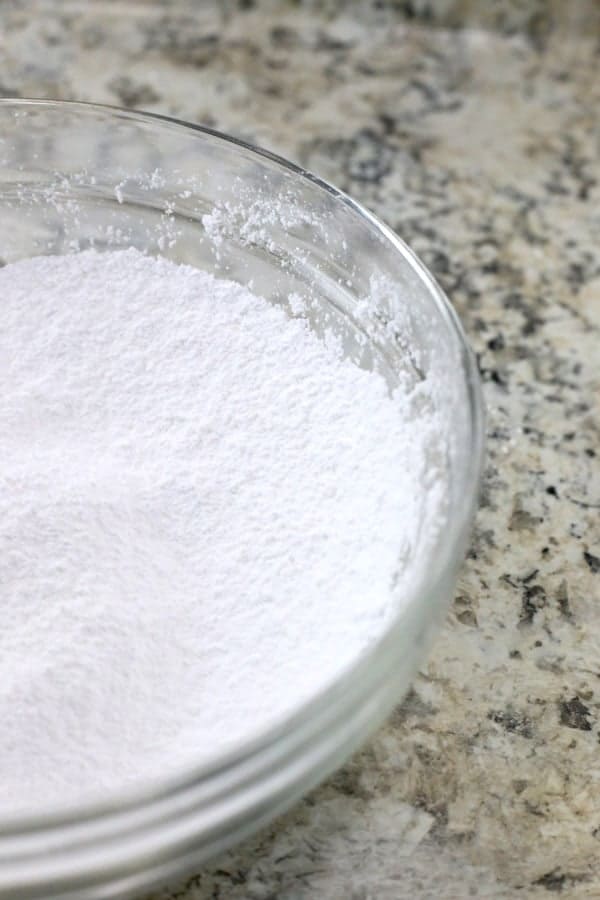
Corn sneaks into all sorts of unexpected things, like powdered sugar. If you have a corn allergy or are avoiding grains, this comes as decidedly unsweet news.
The reason powdered sugar contains cornstarch is simple: it keeps the sugar from caking. There are a few brands of corn-free powdered sugar on the market but they can be hard to find.
Thankfully, as with paleo baking powder, it’s easy to make at home. From start to finish, it’ll take about one minute. One minute. Not bad, eh?
Corn-Free Powdered Sugar: Step-by-Step
To make powdered sugar at home, you really need a high-powered blender or food processor. If your blender struggles with ice and frozen fruit, it probably won’t work. I use my to make powdered sugar. I’m sure a Vitamix would also work. (I’m not familiar with other brands.)
First up, sugar. Regular granulated sugar is all we need. Nothing special. (Note: if you have a plastic jar on your blender or food processor, granulated sugar might scratch during blending.)
Next up: tapioca starch! Like cornstarch, tapioca starch will keep our powdered sugar from caking. And, I think, makes for a better powdered sugar.
Tapioca starch absorbs liquids faster, and a lower temperature, than cornstarch. This means that it makes smooth and silky icings and buttercream. And, in my opinion, I think it tastes less chalky than cornstarch-based powdered sugar. But that’s just a personal taste-thing. When you try it, let me know what you think.
Since tapioca starch absorbs liquids so quickly, it’s prone to clumping after it has sat around a bit. So be prepared to sift corn-free powdered sugar before using.
Place the granulated sugar and tapioca starch in your blender. Blend the sugar and tapioca starch together until powdery, about 30 seconds.
Seriously. That took 30 seconds!
How pretty is that? (True confession: it’s hard to get that sugar off the lid and into the bowl. I don’t even bother. I just rinse it off when cleaning. )
Sift to remove any clumps.

Done!
Corn-Free Powdered Sugar: Best Uses and What to Avoid
Thanks to our friend tapioca starch, corn-free powdered sugar makes excellent icing and buttercream. The smooth tapioca starch granules swell and make for a really smooth icing. In fact, it’s my favorite powdered sugar to use in buttercream icings.
That’s the upside.
Now the downside! Since tapioca starch loves to suck up moisture so much, it will dissolve quickly when dusted onto cakes, desserts, and berries. How quick? Under ten minutes.
If you want to dust something with corn-free powdered sugar, do so right before serving and expect the sugar to dissolve pretty fast.
Shop the Recipe
The following links are affiliate links. GlutenFreeBaking.com earns a commission when you use them to shop.
BlendTec
Vitamix
Ninja Blender
Sifter
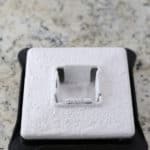
Corn-Free Powdered Sugar
Ingredients
- 1 cup super-fine sugar or tradtional granulated sugar (7 ounces; 198 grams)
- 1 tablespoon tapioca starch (3/4 ounce; 22 grams)
Instructions
-
Combine sugar and tapioca starch in a high-powered blender. Starting at low speed, increase the power until you reach the blender’s highest speed. Blend until the sugar is powder-fine, about 30 seconds. Sift to remove any remaining lumps.
-
Store powdered sugar in an airtight container. Sift before using.


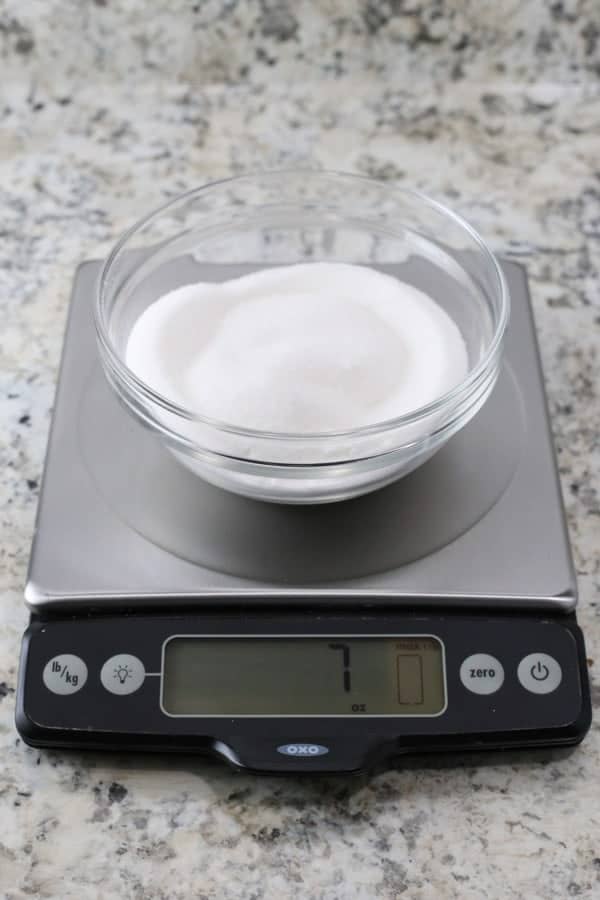
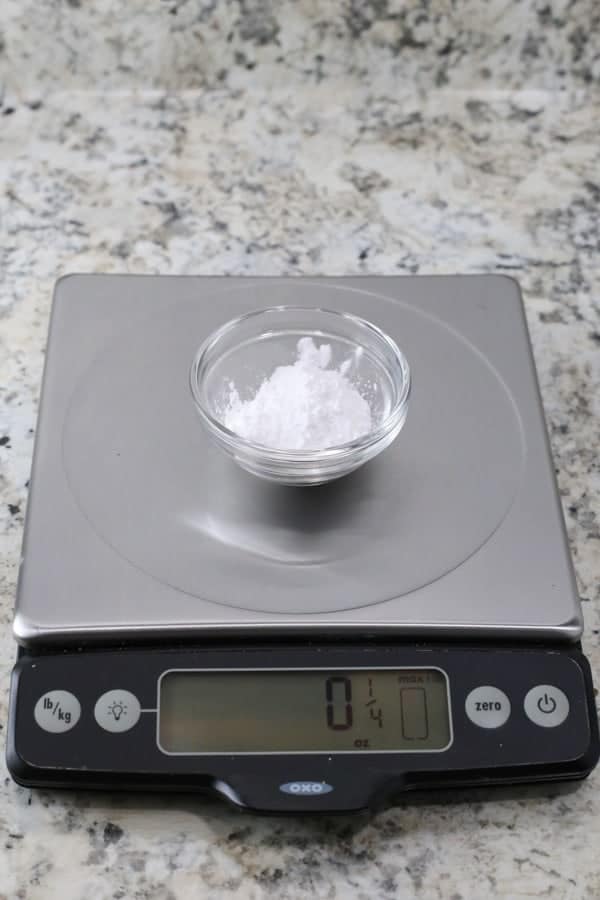
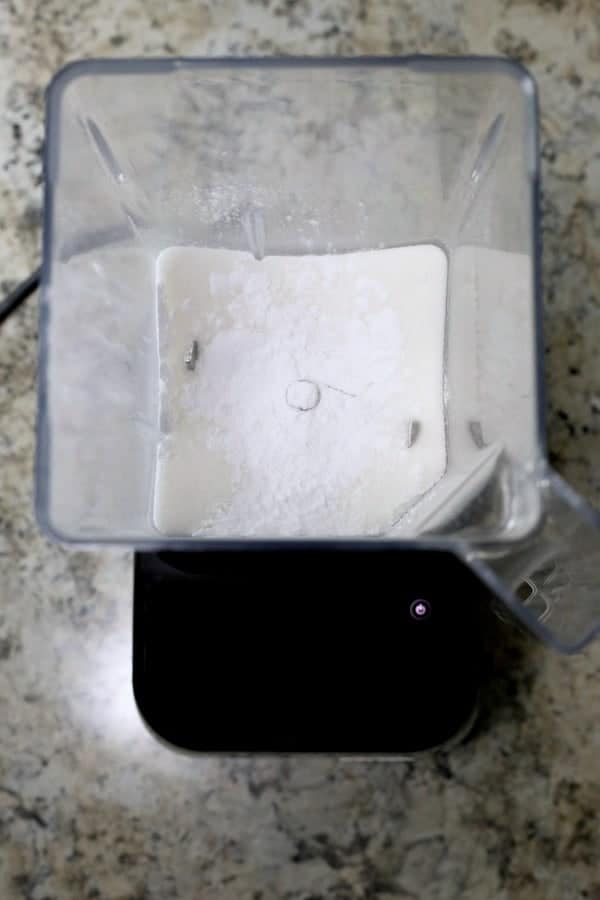
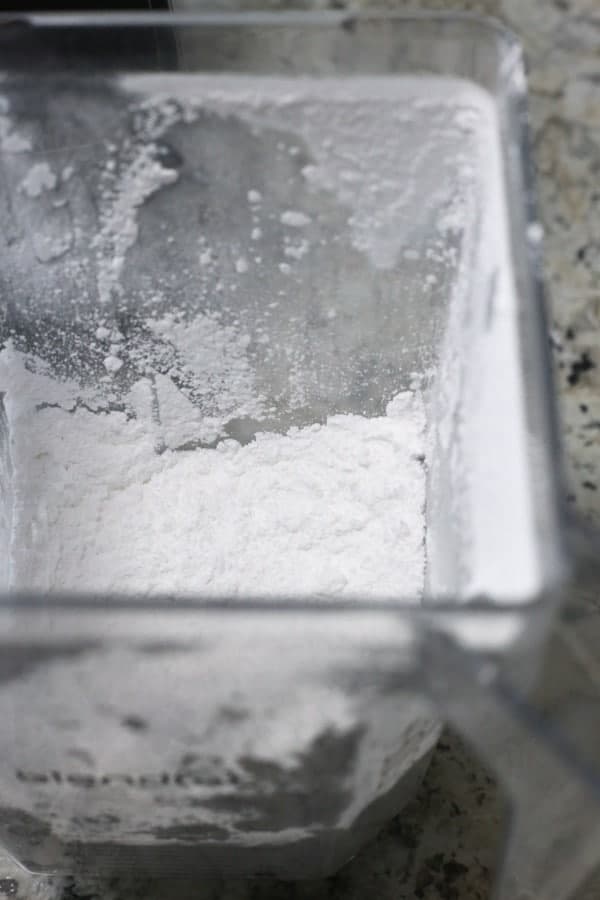

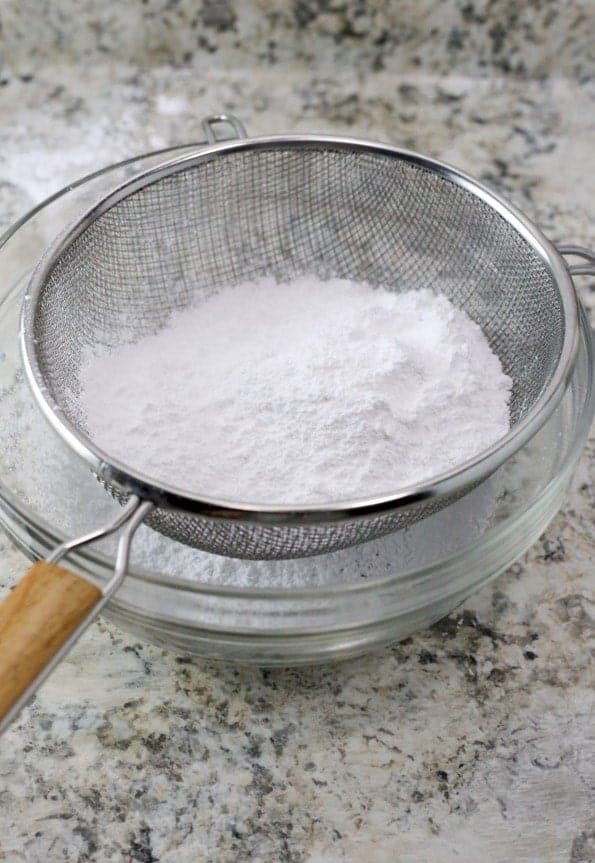
Renee says
I made this using my BlendTec but after 20 seconds or so (level 9), the blade jammed up and I was left with little grey/black bits in my sugar. The sugar also had a metallic taste and smell to it. I tried my second jar and the same things happened. I ran the jar under warm water and then I was able to turn the blades again. It’s as if the sugar liquefied around the blade causing it to seize and I imagine that’s how the black bits got in there if the motor kept running? Have you ever had this happen? What speed did you use on the BlendTec?
Elizabeth says
Yikes! I think I used medium-high speed. Or maybe high speed. When I make another batch this week, I’ll let you know!
Renee says
Turns out I needed new jars. The customer service rep from Blendtec assured me this wasn’t normal and I was sent 2 replacement jars. Thank goodness for that warranty! I’ll be trying this again soon 🙂
Amanda says
Hello there! Do you know if I can use arrowroot powder as a substitute for the tapioca starch? I cannot have tapioca. 🙁
Thanks so much!
Elizabeth says
That should work! The starch is needed to prevent clumping. So while I haven’t tried it with arrowroot, I believe it would work.
JD says
I have a corn allergy & was out of tapioca starch. I used rice starch & it didn’t affect the taste at all! I’ve never used arrowroot, but other corn starch substitutes are:
1. For fried foods~ 1:1 Rice or Potato starch.
2. For fruit pie fillings~ 2:1 AP Flour or Tapioca starch.
3. Gravy, Sauce, Soup & Stew~ Roux 1:1 into = amount of warm fat (I use unsalted butter or pork fat). Arrowroot 1:1 or Tapioca starch 2:1. Do not boil when using tapioca or it develops into a stringy, unpleasant texture.
4. Baked goods~ Rice flour 1:1 in cookies, & Potato starch 1:1 in cakes. AP flour also works, but they won’t as soft & tender.
5. Pudding & Mousse pie fillings~ AP Flour 2:1 is best.
Good luck!
Teresa says
how much tapioca starch to 1 cup of powered sugar?
Elizabeth says
Hi Teresa,
As listed in the recipe, to make powdered sugar, you need one tablespoon (3/4 ounce; 22 grams) tapioca starch to one cup of granulated sugar.
Mel says
A question: if I want to make a glaze/ cookie icing recipe to be less sweet, can I add more tapioca?
Thank you in advanced!
Elizabeth says
Hmmm…I wouldn’t. That would simply make it taste starchy.
Cyn says
I have not tried this but read somewhere if you want a frosting to taste less sweet to add lemon juice I don’t remember the amount but was a teaspoon or less to the recipe.
Bonita says
Can I use my food processor to do this I don’t have a blender ??
Elizabeth says
Yes! You can make this recipe in a high power food processor.